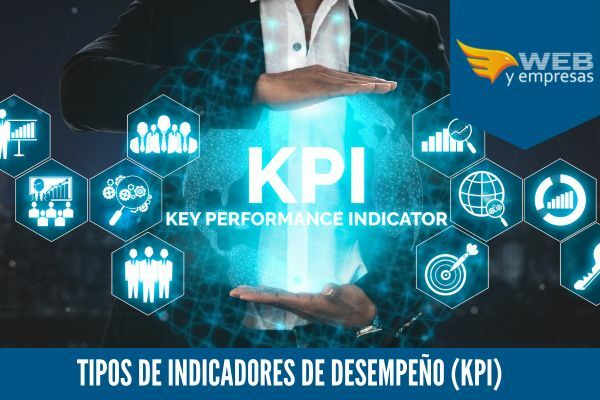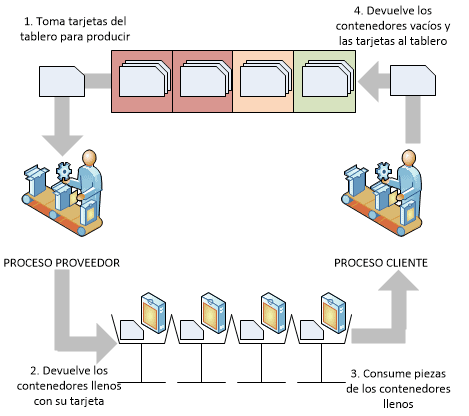Key performance indicators (KPIs) are metrics used to evaluate the success of an organization, projects or processes, providing a way to measure how much progress is being made towards achieving established objectives; Therefore, there are different types of KPIs, each one designed for a specific purpose.
The KPI performance indicatorshave become an extremely valuable tool for companies, since they offer a clear and quantifiable view of performance in various operational areas.
Advertisements

By providing quantifiable data on performance, KPIs allow organizations to identify and monitor their strengths, weaknesses and areas for improvement. In addition, they facilitate decision making based on accurate information, ensuring more efficient and goal-oriented management.
However, there are different types of performance indicators (KPI's), each designed for a specific purpose, let's see what they are:
In this article you will find:
What are performance indicators (KPIs)?
The key performance indicators (KPIs) for its acronym in English “Key Performance Indicator” are metrics used to evaluate the success of an organization, department, project or individual in relation to its specific objectives and goals, which They provide a way to measure how much progress is being made toward achieving established goals.
Basically, KPIs are designed to reflect the success of an organization in relation to strategic and operational objectives, reflecting the current state of what has been achieved.
Some of the most relevant characteristics of KPIs are:
- Measurable: Every KPI must be able to be quantified and measured, therefore, it must be clear and direct in its definition.
- Relevant: They must be aligned with the strategic and tactical objectives of the organization or project in question.
- Achievable: Although KPIs should be challenging, they should also be realistic and achievable. Setting an unattainable KPI can demotivate the team.
- Temporality: They must be associated with a specific period for measurement, whether daily, weekly, monthly, quarterly, etc.
- Specific: They must be clear in their definition to avoid misunderstandings or ambiguities; Each person involved must understand what the KPI means and how it is measured.
- Action: A good KPI should guide towards action; If a KPI indicates that something is going wrong or not working as expected, you should be able to act on that information.
6 Types of Performance Indicators (KPI)
There are different types of performance that a company can apply, each one designed with a specific purpose:
Among the most common types of performance indicators (KPIs) are:
KPI indicators for financial health
KPI indicators for financial health are metrics that Help organizations evaluate and monitor their financial situation, operational efficiency and ability to meet its financial obligations.
These financial indicators They provide a quantitative representation of a company's financial performance and are essential for decision making, strategic planning and performance management.
These in turn are divided into other indicators which are:
- Liquidity ratio.
- Management or activity reason.
- Debt ratio.
- Profitability ratio.
Liquidity ratio: It is a financial metric that provides information about a company's ability to pay its short-term debts using its liquid assets.
Among this group are:
- Current reason: Current assets/Current liabilities.
- Quick reason: Current assets- Inventory/ Current liabilities.
- Net working capital: Current assets-Current liabilities.
Management reason: It is a metric that measures the ability of an organization to carry out its daily activities using its assets efficiently.
Among this group are:
- Accounts Receivable Turnover: Credit sales/Average accounts receivable.
- Average collection period: 365 days/ Turnover of accounts receivable.
- Inventory Rotation: Cost of Sales/Average Inventory.
- Average Inventory Age: 365 days/ Inventory rotation.
- Average Operational Cycle: Average period payment + avg. age Inventory/ 2.
- Total Asset Turnover: Sales income/Total assets x 100.
Debt ratio: This indicator shows the proportion of debt that the company maintains with external parties compared to its own. equity, which indicates the extent to which assets are linked to obligations with creditors and suppliers.
Among this group are:
- Debt Level: Liabilities / Total assets x 100.
- Debt/equity level: Liabilities / Total Equity x 100.
Profitability ratio: These are metrics used to evaluate how effectively the company produces profits relative to the sales for a given period, and the higher the value of this coefficient, the greater the returns obtained.
Among this group are:
- Gross margin: Gross profit on sales/Income (sales) x 100.
- Net profit margin ratio: Profit for the year/Income (sales) x 100.
KPI indicators for customer service
KPI indicators to measure in customer service They help companies understand how they interact with their customers, how satisfied they are, and how these interactions affect the health and growth of the business.
Among the most common are:
- Customer satisfaction: Sum of satisfaction scores / N. total responses.
- Net Promoter Score (NPS): Percentage of promoters − Percentage of detractors.
- Customer retention rate: (No. of clients at the end of the period – N. of new clients during the period) / N. of clients at the beginning of the period x 100.
- Customer acquisition rate: N. of new customers acquired during a period / Total customers at the beginning of the period x 100.
KPI indicators for internal processes
KPI indicators for internal processes provide information on the performance and efficiency of an organization's internal operations and procedures; these KPIs Help companies identify areas for improvement, optimize processes and ensure that internal operations support organizational objectives
Among these indicators are:
- Operating efficiency: Actual production or services provided / Expected production or services x 100.
- Error or defect rate:N. of defective products or errors / Total defective products or errors x 100.
- Conversion rate (e.g., in sales or marketing): N. of conversions (as sales) / N. total visits or interactions x 100.
KPI indicators for supplies and production chain
KPI indicators for supplies and the production chain allow you to evaluate and improve efficiency, the effectiveness and flexibility of operations related to supply management and production; These indicators are fundamental to ensure organizations can meet customer demand while minimizing costs and maximizing quality.
Among these indicators are:
- Order fulfillment rate: N. of orders fulfilled correctly and on time / N. total orders placed x 100.
- Average inventory rate: Initial Inventory + Final Inventory /2.
- Product returns rate: N. of returned products/N. total products x 100.
KPI indicators for human resources (HR)
KPI indicators for human resources offer information on efficiency, effectiveness and alignment of personnel management policies and practices with the general objectives of the company organization; These indicators are very helpful to ensure that human resources are being properly managed, since they are one of the most valuable assets of any organization.
Among these indicators are:
- Employee turnover: N. of employees who left the company during the period / Average number of employees during the period ×100.
- Absenteeism rate: Unplanned absence hours/Total work hours ×100.
- Performance evaluations: Sum of performance scores / N. total evaluations.
KPI indicators for quality
KPI indicators for quality focus on evaluating and monitoring the effectiveness, efficiency and compliance of an organization's products, services or processes with respect to standards or expectations established; These indicators are vital to ensure that a company meets the desired quality criteria and to identify areas for improvement.
Among these indicators are:
- Defect rate: N. of defective products or services/Total products or services produced ×100.
- Return rate: N. of returned products/N. total products sold ×100.
- Standards compliance rate: N. of items that meet the standards/ Total items evaluated ×100.
Conclusion
Performance indicators (KPI) are essential tools that offer a quantitative view of the performance of different areas of a company, which allow monitor and evaluate the efficiency of processes, the quality of products or services, customer satisfaction, financial health, among other crucial aspects to the business.
However, there are specific KPIs for each department, from finance and production to human resources and marketing; By defining and monitoring these indicators, organizations can identify opportunities for improve, make data-driven decisions and align your efforts toward achieving goals strategic.


